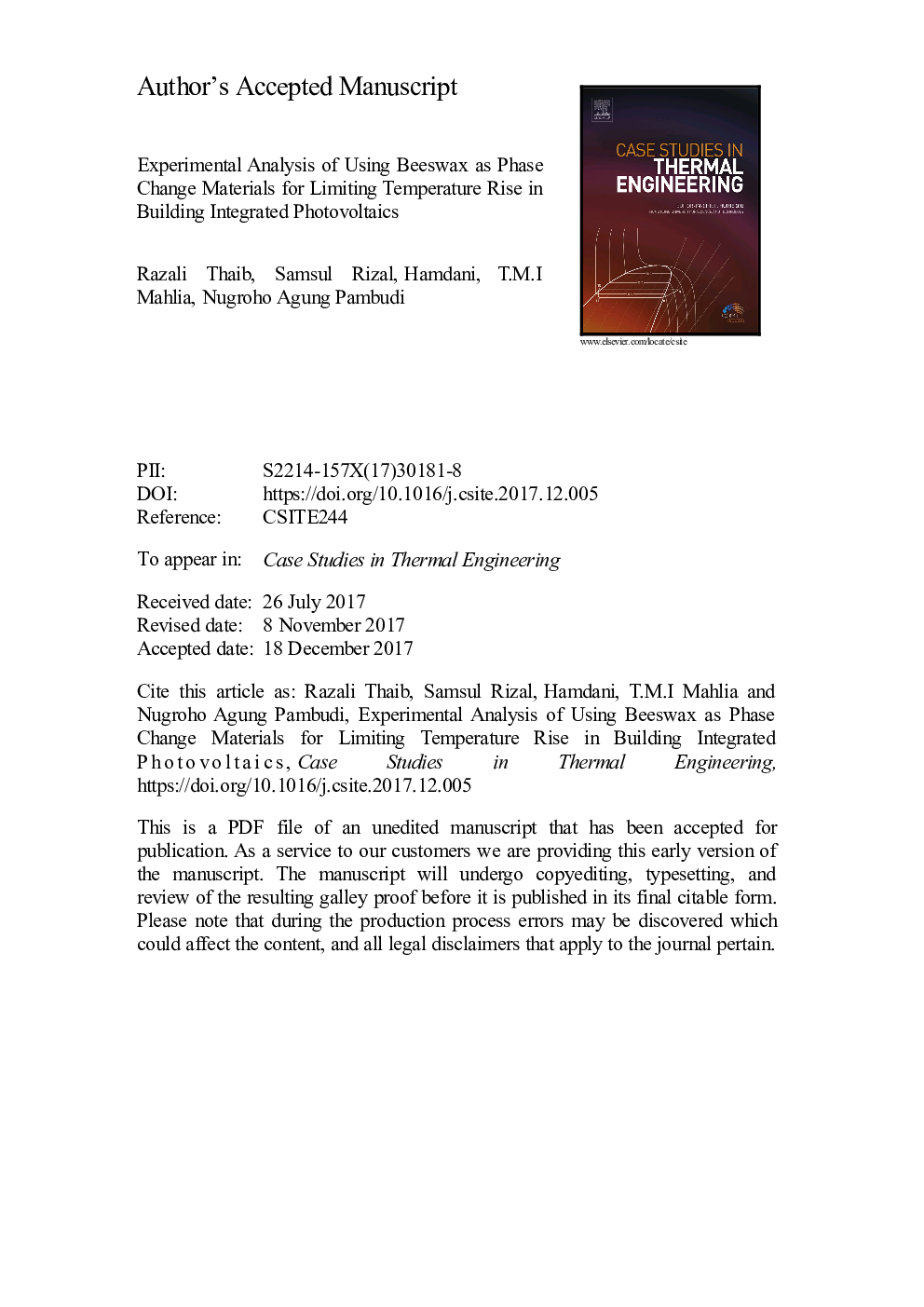| کد مقاله | کد نشریه | سال انتشار | مقاله انگلیسی | نسخه تمام متن |
|---|---|---|---|---|
| 7153287 | 1462473 | 2018 | 8 صفحه PDF | دانلود رایگان |
عنوان انگلیسی مقاله ISI
Experimental analysis of using beeswax as phase change materials for limiting temperature rise in building integrated photovoltaics
ترجمه فارسی عنوان
تجزیه و تحلیل تجربی استفاده از موم زنبور به عنوان مواد تغییر فاز برای محدود کردن افزایش دما در ساخت یکپارچه فتوولتائیک
دانلود مقاله + سفارش ترجمه
دانلود مقاله ISI انگلیسی
رایگان برای ایرانیان
موضوعات مرتبط
مهندسی و علوم پایه
سایر رشته های مهندسی
مهندسی مکانیک
چکیده انگلیسی
Indonesia has the potential of saving from 10% to 30% of energy in the commercial sector which consists of trade, hotels, restaurants, finances, government agencies, schools, hospitals, and communications. By simultaneously serving as building envelope material and power generator, BIPV systems can represent savings in the cost of materials and electricity. It reduce the use of fossil fuels and emission of ozone depleting gases, and also add architectural interest to buildings. However, the temperature rise poses a challenge for BIPV, given that it manifests itself in electrical efficiency and overheating. The experiments present in this study aim at understanding the behavior of the PV-PCM systems in realistic outdoor uncontrolled conditions to determine how effective they are. In addition, the PV-PCM systems were tried in the low latitude and hot climate of Banda Aceh, Indonesia. Experiments were conducted outdoors at the Engineering Faculty in Syiah Kuala University, located in Banda Aceh, Indonesia (05:57 N, 95.37 E). In this study, both paraffin wax and beeswax were used as a phase change material. The final results showed that the electrical efficiency of PV panels without PCM is ranged between 6.1% and 6.5%. While for PV panels with PCM the efficiency is ranged at 7.0-7.8%. This proved that the process of water cooling is capable of increasing the efficiency of PV panels.
ناشر
Database: Elsevier - ScienceDirect (ساینس دایرکت)
Journal: Case Studies in Thermal Engineering - Volume 12, September 2018, Pages 223-227
Journal: Case Studies in Thermal Engineering - Volume 12, September 2018, Pages 223-227
نویسندگان
Razali Thaib, Samsul Rizal, Hamdani Hamdani, T.M.I. Mahlia, Nugroho Agung Pambudi,
